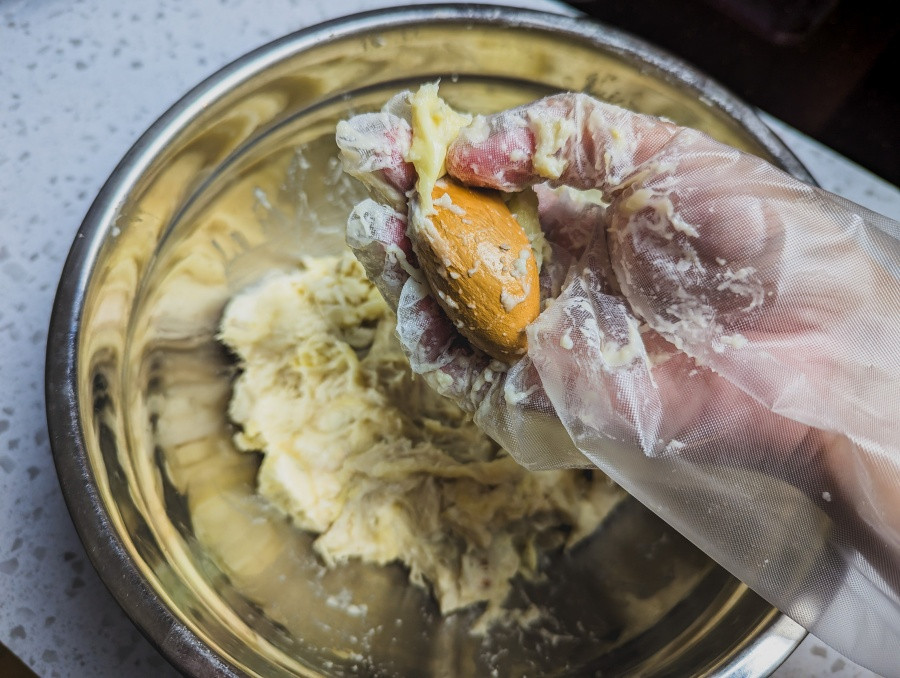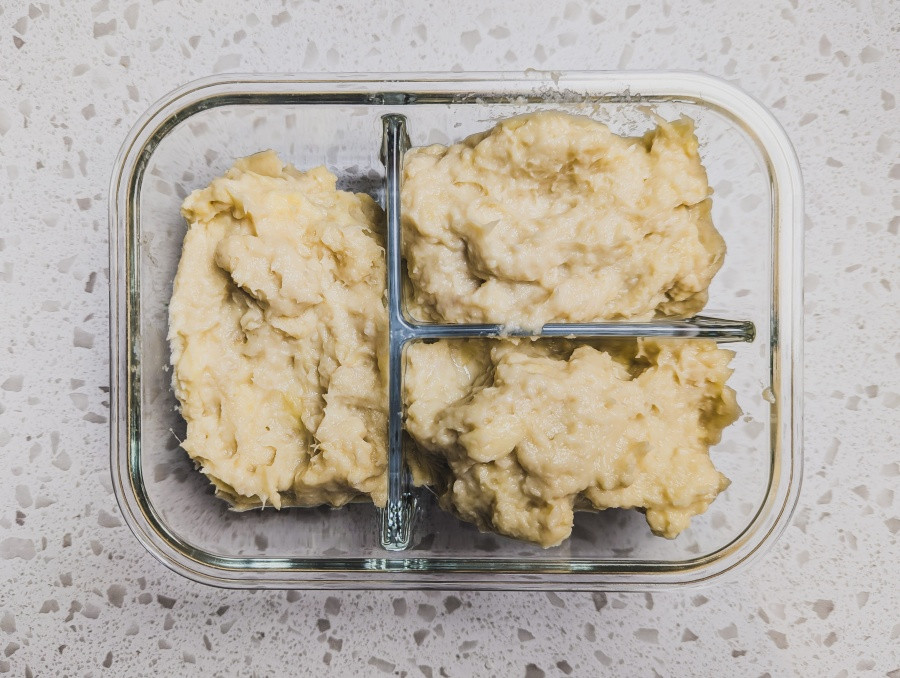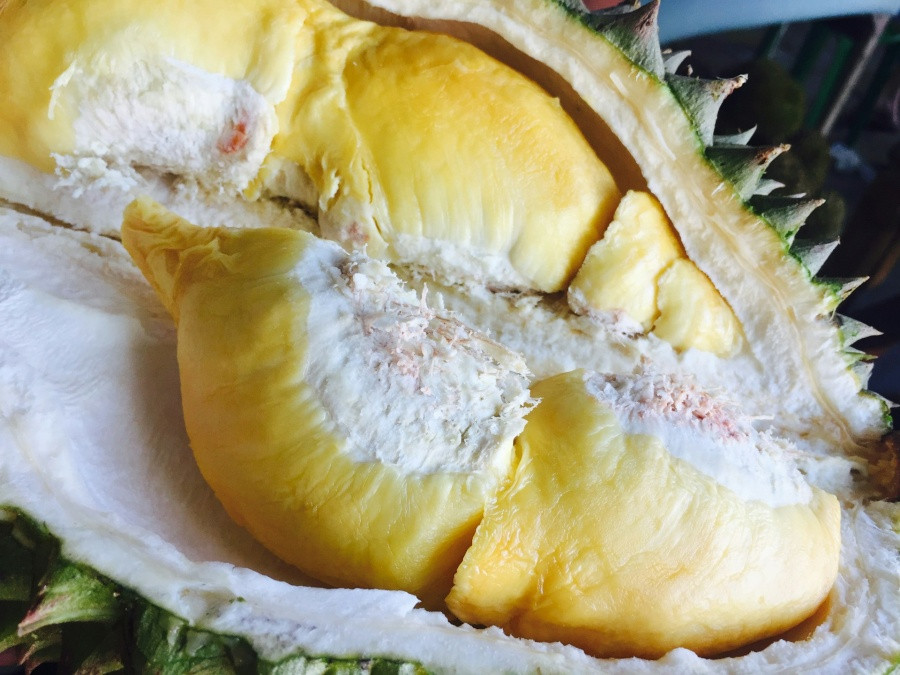The ultimate guide to tempoyak
by Tunku Muhammad Tunku Farahat27 Sep 2024
Learn about the indigenous Sumatran origins of the beloved fermented-durian condiment, the bacterial reactions that allow its complex flavours to develop, and its many nutritional benefits.
Durian, our national fruit, is usually sold throughout the year but its official harvest season is between May and September. Because of the fruit’s wide harvest window and short best-by period of two days, our ancestors created tempoyak to preserve the fruit. Just like many other ‘accidentally’ fermented foods such as tapai (fermented rice), tempoyak was accidental in its discovery as the abundance of the fruit led to it fermenting on its own.
Indigenous Sumatrans—who were scattered in many different islands within the Malay archipelago—were nomadic people, often sailing through Maritime Southeast Asia. The group’s migration throughout the region spans many eras, beginning from as early as 3,000 BCE right up to the 20th-century colonial era. Many of these voyagers settled in the countries they sailed through such as Malaysia, Indonesia, and Brunei. Tempoyak was usually made prior to their long voyages, and their knowledge of fermenting durian would be passed down generationally, particularly in lands where durian trees also grew abundant.
While it’s unclear when tempoyak was first eaten, Malacca-born Munshi Abdullah bin Abdul Kadir sang the praises of tempoyak in 1836 in his book Hikayat Abdullah about his trip to Terengganu, which surged the pungent condiment to new heights.
Culinarily, Indonesia and Malaysia use tempoyak differently. Indonesia uses it as a sauce or in the curing of fish wrapped in banana leaf which is then grilled, lending a sourish salty note to dishes. Meanwhile, Malaysians eat it as a condiment or in dishes like gulai tempoyak (tempoyak curry) or tempoyak fried rice. Gulai tempoyak is widely available in many Malay restaurants, and Temerloh in Pahang is a haven for gulai tempoyak ikan patin (pangasius fish in tempoyak curry). It’s a savoury spicy curry with funky salty notes at the end of each bite, usually eaten with rice, fresh greens, and sambal.
The science behind tempoyak
Tempoyak comes from the root word ‘poyak’ or modernly known as ‘koyak’ which means torn. The torn-apart durian flesh is mixed thoroughly with or without salt and kept in a container for four to seven days. In lidded jars, spontaneous anaerobic fermentation occurs. The existing lactic acid bacteria on the durian starts to break down the carbohydrates and starches into lactic acid, an anaerobic reaction. More lactic acid is produced as the pH lowers, resulting in a strong, sourish aroma.
Tempoyak can be made with or without salt. However, the lactic acid bacteria may not be as effective to produce good-tasting tempoyak in the absence of salt as the bacteria competes with other unwanted microbes.
The minimal addition of salt —usually less than 5% in weight against the durian flesh—supports lactic acid bacteria to produce highly acidic foods in a short time. Tempoyak with a higher than 5% of salt content will last longer and inevitably produce a saltier profile. Historically, minimally salted tempoyak was made with sweeter variations of fruit to bring out its complex acidity while less-sweet varieties were highly salted to enjoy tempoyak for longer.
In Malaysia, the average tempoyak-maker would add up to 2% salt, producing a slightly sweeter and more acidic tempoyak. It’s been found that 27°C is the optimal temperature to ferment durian, producing the best-tasting tempoyak between day four and six as the pH and sugars stabilise and the lactic acid bacteria hits a peak.
After seven days, new non-uniform compounds such as propionic acid and acetic acid increase in concentration, both of which lend tang. However, this increase in concentration may also invite pathogens to produce potentially foul tempoyak. Just like sourdough starter, using a good batch of tempoyak as a ‘starter’ for new batches allows for a more consistent and better-tasting product. But, many factors still play a part to the final product such as durian variety, fermentation concoctions, and indigenous microbes in the environment.
Nutritionally, the content of tempoyak will differ from each variety of durian used, the environment and the handling of the product. From a proximate analysis of its nutritional content, the bulk of its nutrients come from carbohydrates, fat, protein and some micronutrients such as potassium, carotenoids, sodium, calcium, iron and vitamin B2. All aforementioned nutrients help with nerve transmission, eye health, muscle contractions and oxygen transport.
These concentrations of nutrients may not be substantial on its own but tempoyak additionally offers powerful bio-active components as a result of its fermentation. Generally, functional foods (like tempoyak) are high in polyphenols, terpenoids, flavonoids, and unsaturated fatty acids. These substances exhibit antioxidant properties and may help protect against oxidative stress and inflammation in the body. Fatty acids are particularly influential in maintaining cell structure and function which in turn promotes general wellbeing. With fermentation comes beneficial microbes such as L. plantarum and L. brevis that improve digestion, maintain a healthy immune system, and boost overall gut health.
Get Tunku Muhammad’s basic recipe for tempoyak here.
***
Tunku Muhammad is a registered dietitian with an interest in all aspects of food, especially fermentation. He is also an abstract artist and writer.
Read next
Sambal tempoyak daun kayu
Cassava shoots in a thick gravy

The value of tapioca through the eras
Tapioca, past and present

The making of budu, our underrated condiment
A spotlight on budu







